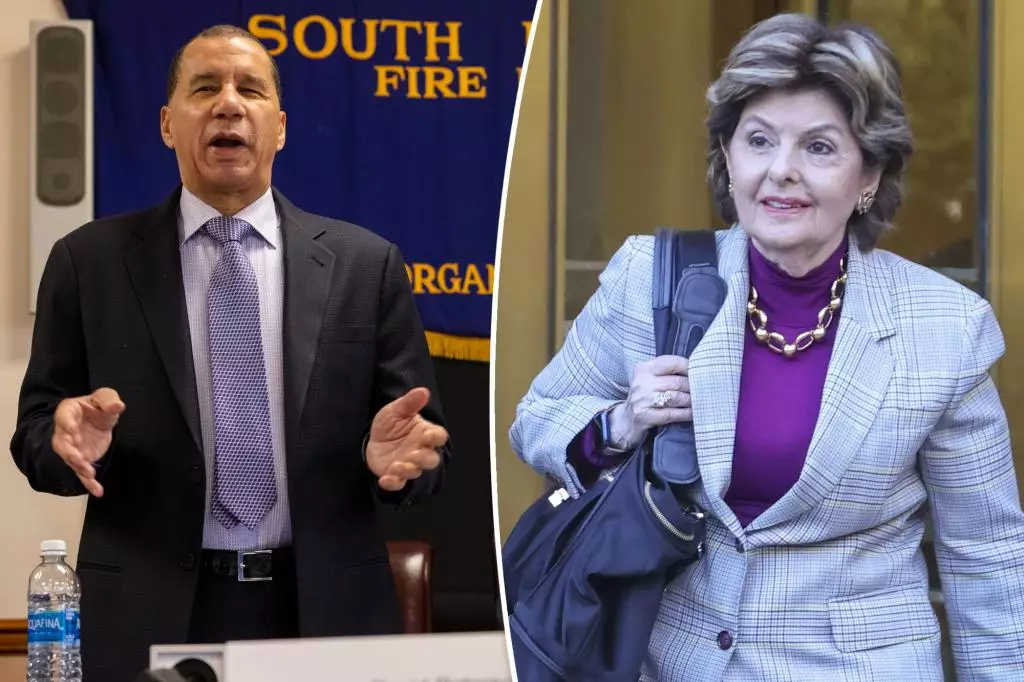Former New York Governor David Paterson recently found himself in the public eye for more than just his political history. A week after a violent attack left him and his stepson shaken, Paterson was seen socializing with high-profile attorney Gloria Allred at Fresco by Scotto, a renowned restaurant in Manhattan. This public encounter not only illustrates the resilience of Paterson but also highlights the intertwining of personal adversity with public figures’ lives, showcasing how they navigate the complexities of fame, legal matters, and personal trauma.
During their dinner, sources described an intense conversation between Paterson and Allred, who is known for her advocacy for survivors of abuse. Their discussion reportedly revolved around the unsettling incident in which Paterson and his stepson were assaulted while walking their dog. It is a stark reminder of the challenges public figures face; even as they partake in the pleasures of fine dining, their personal lives can often be marred by violence and fear. This juxtaposition raises questions about safety and the public perception of political figures when they encounter crises.
The incident itself paints a vivid picture of urban life’s dangers. On October 4, Paterson and his 20-year-old stepson, Anthony Chester Sliwa, confronted three suspects climbing a fire escape. What could have remained a moment of observation turned violent as the trio attacked the governor and his stepson. Paterson himself recounted the chaos of the altercation, describing how he reacted instinctively to defend himself and his stepson. His use of physical force in the face of danger underscores a primal human instinct for self-preservation and protection—a poignant reminder that, regardless of one’s status or past, anyone can find themselves vulnerable.
In the aftermath, the arrests of four individuals connected to the attack sparked discussions about urban crime and safety. The identities and ages of the assailants reveal another layer of societal concern—the participation of minors in violent acts. Paterson’s condemnation of the adults involved in the incident raises ethical dilemmas about accountability and the influence of socioeconomic factors contributing to youth violence in urban settings.
Continued Advocacy and Support
Paterson’s evening with Allred didn’t only serve as a personal reprieve following a traumatic episode; it demonstrated the urgency of dialogue surrounding safety and victim advocacy. Allred, having garnered attention for her legal battles with high-profile figures in cases of sexual abuse, was undoubtedly a source of understanding for Paterson. Her presence signifies solidarity in a landscape often riddled with skepticism and victim-blaming narratives.
Moreover, Allred’s participation in high-stakes legal matters—such as her involvement in Sean “Diddy” Combs’ sex-trafficking case—adds another layer of complexity to her public persona. It illustrates how those who fight for justice must continually face public scrutiny while also supporting their clients through profound personal experiences. Paterson’s connection with Allred could symbolize a merging of political and legal worlds that often intersect in contemporary society.
The media narrative surrounding Paterson, from his political tenure to his recent assault, reveals how the lives of public figures are often under constant examination. This incident isn’t just a story of violence in Manhattan; it reflects broader societal themes about safety, violence, and accountability. It serves as a reminder that even those in high political offices can find themselves vulnerable and require support, empathy, and understanding from their community.
Ultimately, Paterson’s experience reiterates the importance of dialogue over action when addressing such crises. Whether through the lens of a former governor or a legal advocate, the convergence of personal trauma and public life necessitates a broader understanding of societal responsibilities. Navigating personal adversity in a public sphere requires not just resilience but also systemic support to foster recovery in the wake of violence. This narrative highlights that, even in the face of challenges, there exists an opportunity for connection, dialogue, and healing in public life.

Leave a Reply